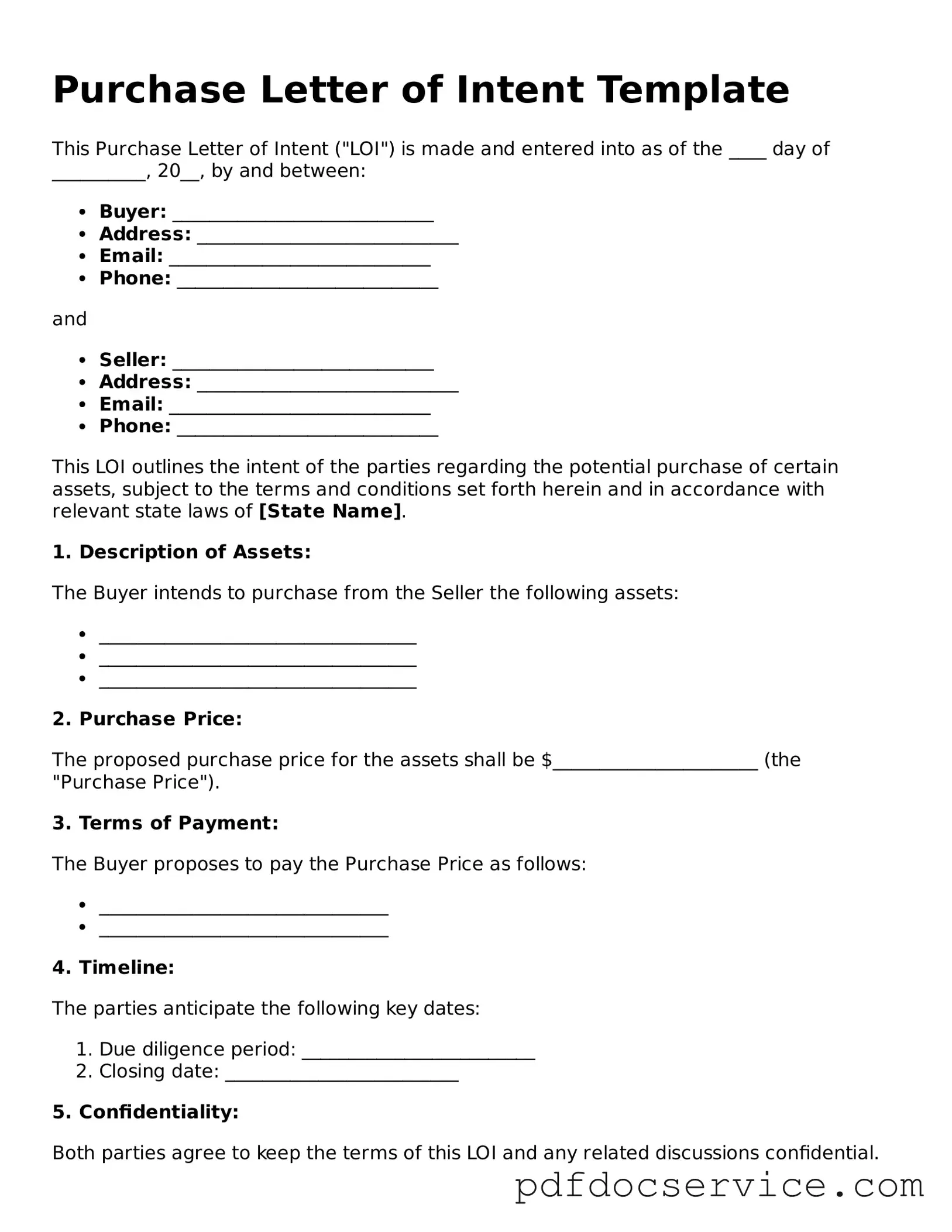What is a Purchase Letter of Intent?
A Purchase Letter of Intent (LOI) is a document that outlines the preliminary understanding between a buyer and a seller regarding the purchase of a property or business. It serves as a starting point for negotiations and can help both parties clarify their intentions before entering into a formal agreement.
Why is a Purchase Letter of Intent important?
The LOI is important because it establishes the basic terms and conditions of the proposed transaction. It can help prevent misunderstandings and ensure that both parties are on the same page. Additionally, it can demonstrate the buyer's serious intent to purchase, which may encourage the seller to engage in further negotiations.
What key elements should be included in a Purchase Letter of Intent?
A well-crafted LOI typically includes the following elements:
-
The names of the buyer and seller
-
A description of the property or business being purchased
-
The proposed purchase price
-
Any contingencies or conditions that must be met
-
The timeline for completing the transaction
-
Confidentiality provisions, if necessary
Is a Purchase Letter of Intent legally binding?
Generally, a Purchase Letter of Intent is not legally binding. It is considered a preliminary document that outlines the intentions of both parties. However, certain provisions within the LOI, such as confidentiality or exclusivity agreements, may be binding. It’s essential to clearly state which parts of the LOI are intended to be binding and which are not.
How does a Purchase Letter of Intent differ from a purchase agreement?
The primary difference lies in the level of detail and commitment. A Purchase Letter of Intent is a simpler document that outlines the basic terms of the deal, while a purchase agreement is a comprehensive contract that includes all the terms and conditions of the sale. The purchase agreement is legally binding and is executed after the LOI is agreed upon.
Can a Purchase Letter of Intent be modified?
Yes, a Purchase Letter of Intent can be modified. If both parties agree to changes in the terms or conditions, they can draft an amended LOI. It’s important to ensure that any modifications are clearly documented to avoid confusion later in the negotiation process.
Who typically prepares the Purchase Letter of Intent?
While either party can prepare the LOI, it is often the buyer who takes the initiative. Buyers may seek legal advice to ensure that their interests are adequately represented. However, collaboration between both parties can lead to a more balanced and effective document.
What happens after a Purchase Letter of Intent is signed?
After the LOI is signed, the parties typically move forward to negotiate a formal purchase agreement. This process may involve due diligence, financing arrangements, and other necessary steps to finalize the transaction. The LOI serves as a roadmap for these subsequent negotiations.
Can a Purchase Letter of Intent be used for different types of transactions?
Yes, a Purchase Letter of Intent can be used for various types of transactions, including real estate purchases, business acquisitions, and even mergers. The key is to tailor the LOI to fit the specific circumstances of the transaction and the needs of both parties involved.
